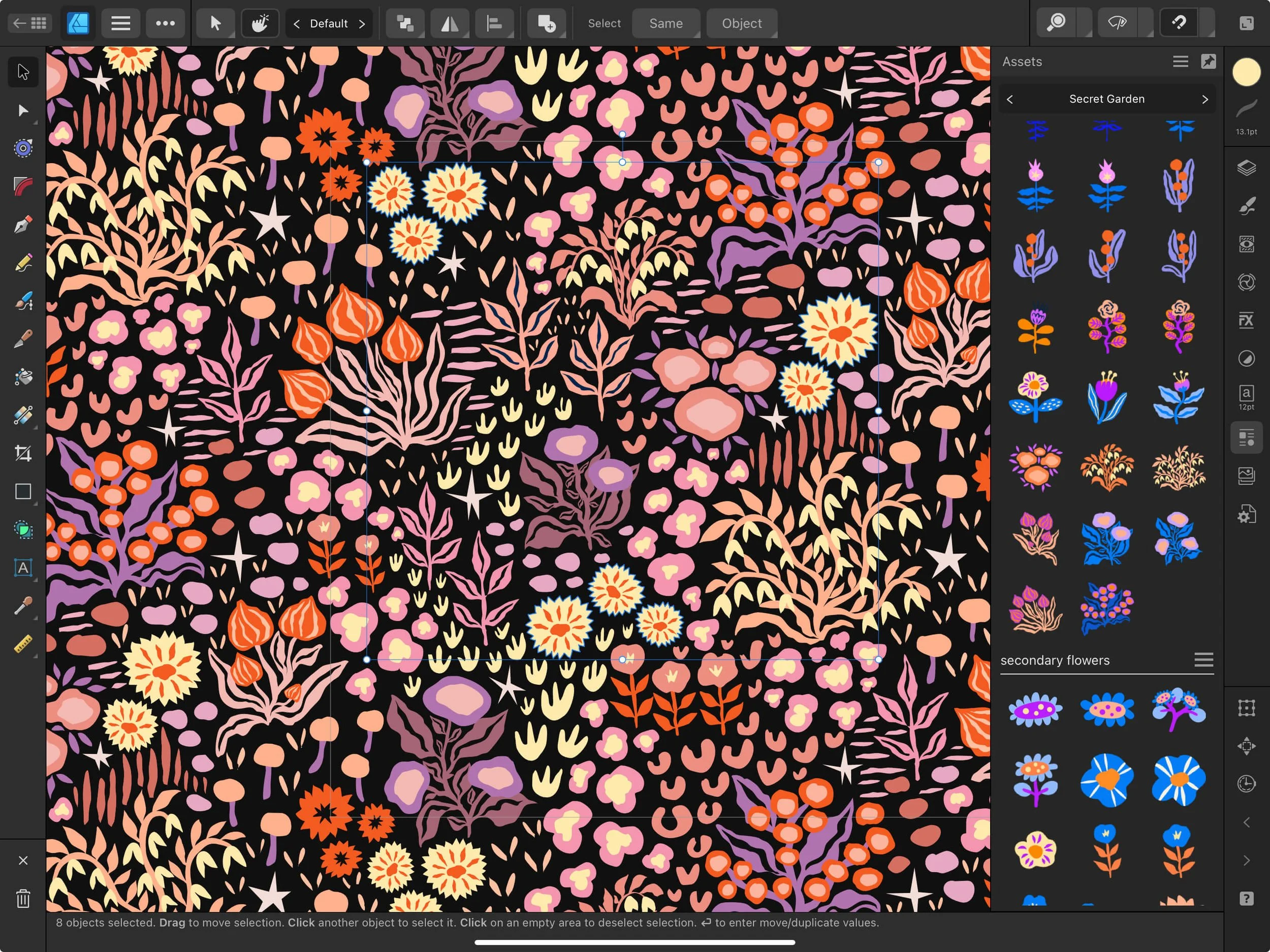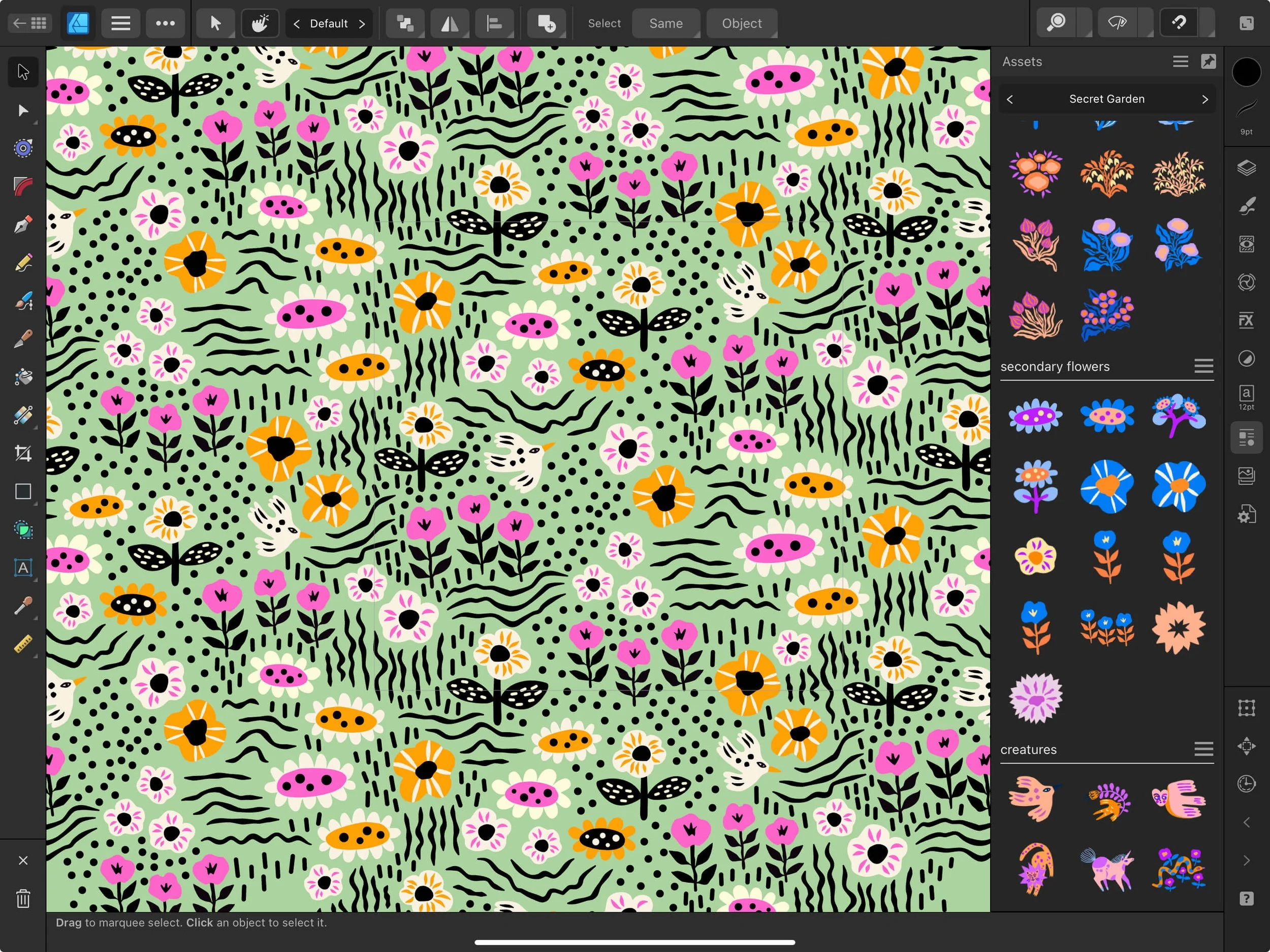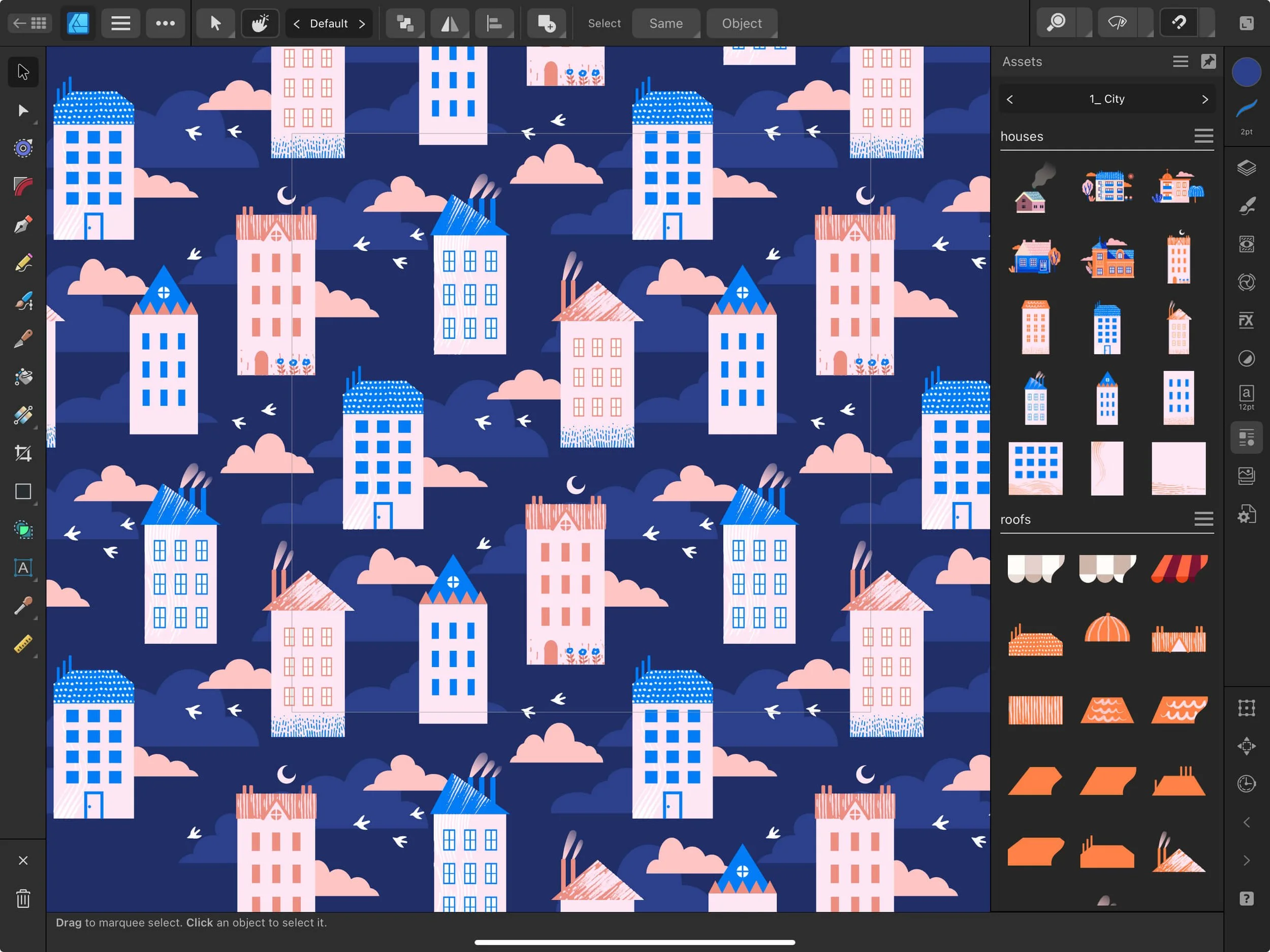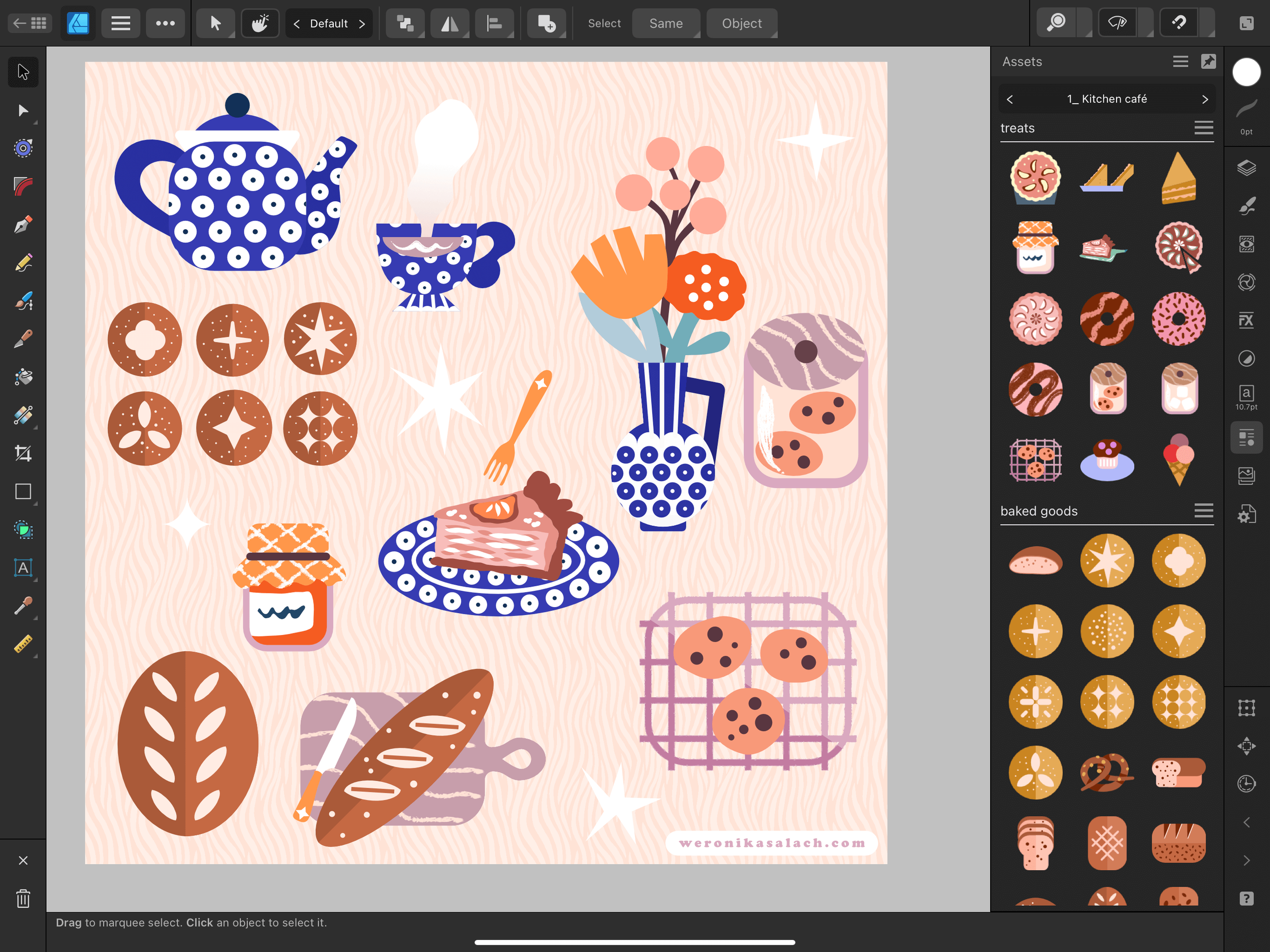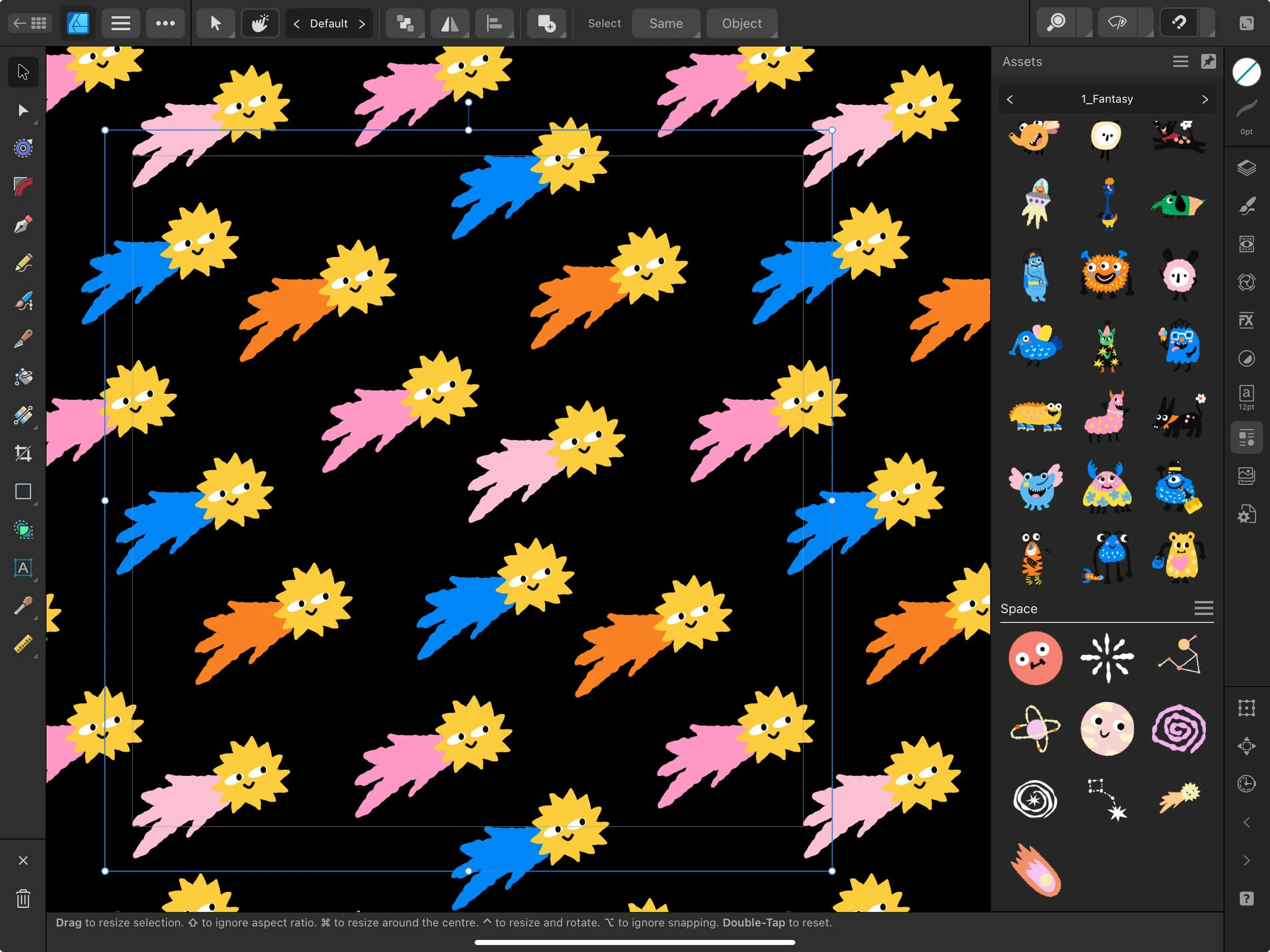Affinity Designer Assets: My Favorite Productivity Boost
As a busy entrepreneur, navigating the balance between creativity and efficiency has always been a challenge. We all have just 24h in a day, and when you’re a new mom, that seems even less :) As an illustrator, I've discovered a game-changer that has not only transformed the way I work but has also significantly enhanced the quality of my work—pre-saved assets in Affinity Designer.
In my illustration journey, incorporating the habit of reusing vector assets has proven to be a game-changer. These pre-saved digital elements, carefully collected from past projects, have become valuable tools that bring both efficiency and consistency to my creative process.
I have a whole class about how I create vector assets in Affinity Designer in case you’d like to check it out:
When starting a new project, I often flip through my assets library in the Affinity Designer interface. These can be anything from floral filler motifs to more detailed botanical or architectural elements which can then serve as the foundation for my illustrations. The practice of reusing these assets not only speeds up my work but also ensures a consistent visual style across different projects.
Sometimes it’s about the speed…
The benefit of reusing vector assets extends beyond time-saving. It allows me to devote more time and energy to the creative side of my illustrations.
Instead of spending hours recreating common elements, I can focus on experimenting with ideas and adding unique touches to each piece.
Using assets has really helped me a ton to build my kidlit art portfolio in no time. Not all illustrations will “sell” and certainly at this point not all of them are client work, so I compensate myself this time investment with such efficiency hacks as recycling assets. Here’s one more example how I recycled my breads and baguettes for another kids’ illustration and also an extra flat lay illustration:
Don't be afraid to embrace the efficiency of recycling some elements—it's a smart and sustainable approach that allows you to focus on what truly matters, your work and your portfolio. And eventually when you get client work, you’ll be ahead of other artists and you’ll be able to offer some speed and efficiency to fulfil client deadlines!
Happy creating!
PS: I’m talking about assets in my newest online course for pattern designers, Surface Pattern Design: Refining Patterns & Portfolio Building.

